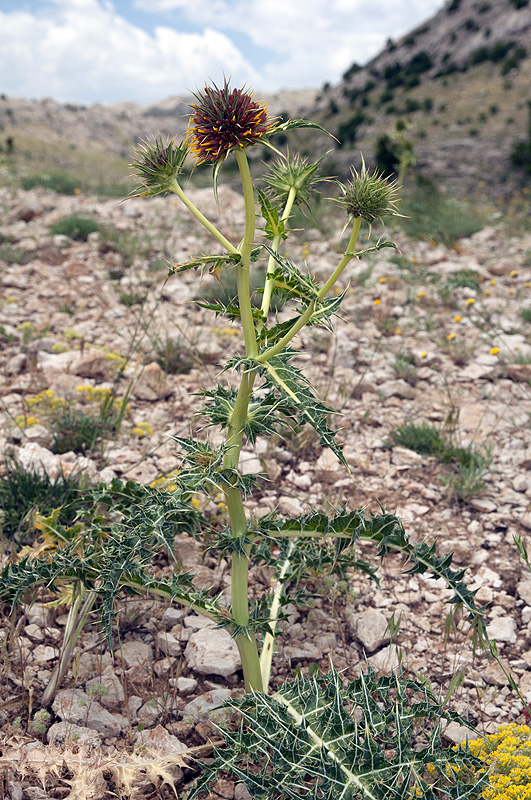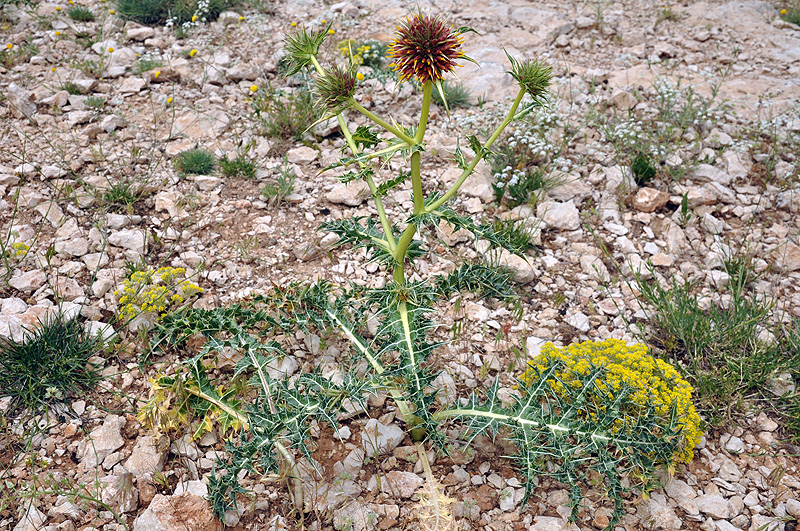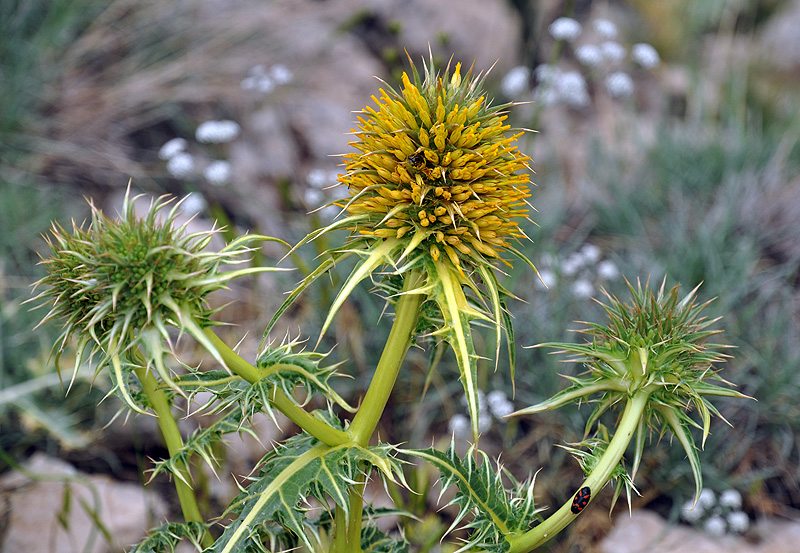Familia: ASTERACEAE

[Photo © M.Hoskovec]
In Turkey Gundelia tournefortii (Asteraceae) has been reported [❖] to serve as a host plant for Cortodera syriaca Pic, 1901 and Agapanthia coeruleipennis Frivaldszky, 1878. Moreover, this plant has also been reported [❖] as a possible host of very little known and rare Cerambycidae species Phytoecia (Helladia) plasoni Ganglbauer, 1884. Recent results, however, have shown that Phytoecia (Helladia) plasoni is undoubtedly associated with a different still undetermined Asteraceae plant.
Gundelia tournefortii areas of occurence are the semi-desert areas of Lebanon, Syria, Palestine, Israel, Jordan, Iraq, Iran, Azerbaijan, Armenia, and Anatolia. The leaves, stems, roots, and undeveloped flower buds of G. tournefortii, colloquially known as tumble thistle, are edible when they first sprout in early spring (February–March). The plant becomes progressively drier over the summer, it leaves yellowing and growing spikes. Before dying, it detaches from the root to be pushed around by the wind and disperse its seeds for the following year's harvest. Known as aqub (عكوب) in Arabic, Arabs use it for food and healing purposes, and respect and identify with the plant. Sold in markets in Jerusalem, Syria, Iraq and Lebanon, it's also gathered in the wild in Turkey. [wiki]
[❖]
Rejzek M., Sama G., Alziar G.:
Host plants of several herb-feeding Cerambycidae mainly from east Mediterranean region (Coleoptera: Cerambycidae).
Biocosme Mésogéen 17 (4): 263-294, 2001. [download]


[Photo © M.Hoskovec]
